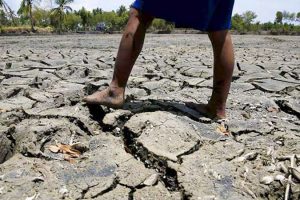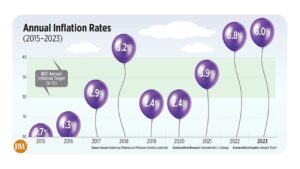Farmers see rice output falling next year due to El Niño impact

By Adrian H. Halili, Reporter
FARMERS are expecting a decline in rice production next year due to the expected dry spells arising from El Niño.
“The biggest factor affecting next year’s output will be El Niño (depending on) severity and timing,” Leonardo Q. Montemayor, chairman of the Federation of Free Farmers, told BusinessWorld.
Rizal Commercial Banking Corp. Chief Economist Michael L. Ricafort added that the resulting dry spells could have inflation implications.
“Reduced rainfall could reduce the production of rice and agricultural products, thereby leading to some pick up in prices,” Mr. Ricafort said in a Viber message.
El Niño is projected to enter a stronger phase in January, persisting until May, according to the government weather service, known as PAGASA (Philippine Atmospheric, Geophysical and Astronomical Services Administration).
PAGASA has said that drought or dry spells may be experienced by about 63 provinces during the period.
“The first three out of four months of the crop production cycle for palay needs a lot of water, so a dry episode during this period will affect yields and output,” Mr. Montemayor added.
He said dry season crops would mainly benefit from the dry spells brought about by the weather phenomenon.
“If the drought episode occurs during the 2nd quarter as announced by PAGASA, it will be good for the dry season crop that is harvested in March-April, but bad for the wet (main) crop that normally starts in May and is harvested in October to December,” he added.
He said that unlike dry season crops which are mostly irrigated, “a significant portion of the wet season crop is dependent on rain.”
Production of palay or unmilled rice is expected to come in at 7.32 million metric tons (MT) during the fourth quarter, according to the Philippine Statistics Authority.
The Department of Agriculture has projected palay production in 2023 of 20 million MT.
Mr. Montemayor said that the government should have earlier invested in water impounding and rain harvesting projects to mitigate the effects of the El Niño.
“Right now, some dams are releasing excess water, and this could have been saved for future needs. In areas where water availability is low, farmers will have to be assisted in growing alternative crops,” he added.
The Department of Environment and Natural Resources said last week that water in reservoirs like Angat Dam is expected to be sufficient until May or June of next year, citing a need to conserve water resources.




